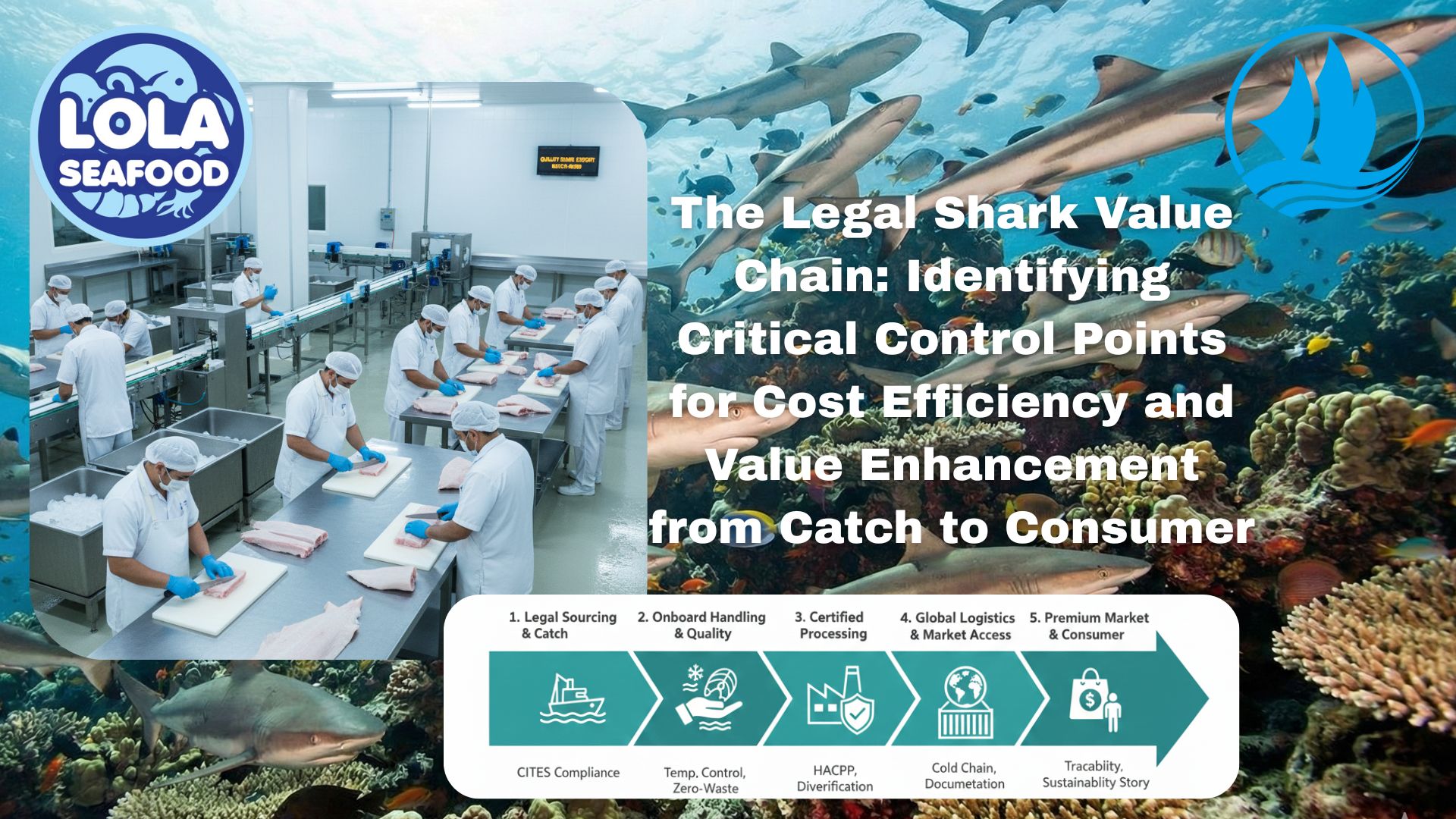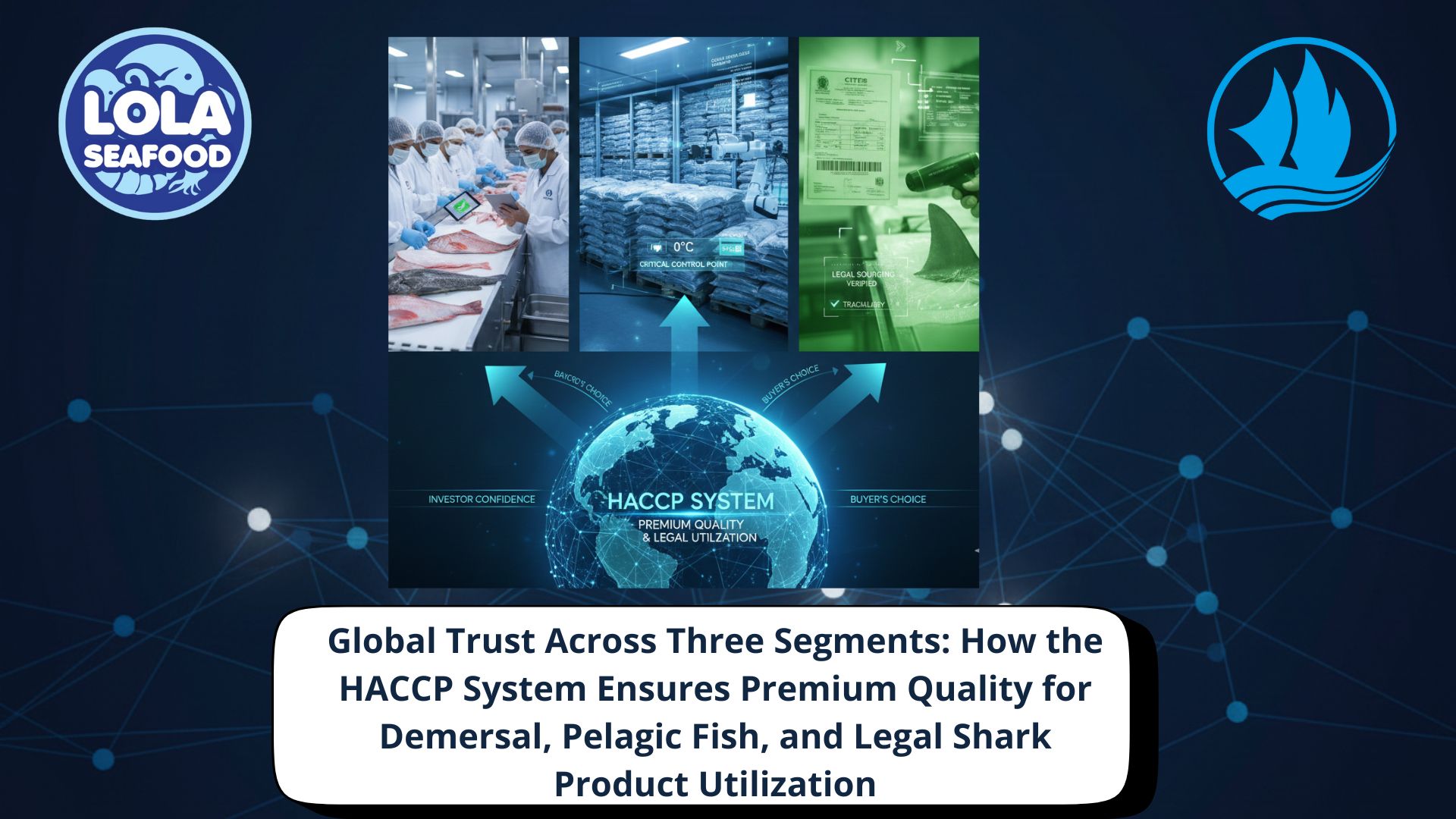HACCP Compliance through Metal Detection: A Key Step in Fish Processing Safety
By. Lutfi - 25 Aug 2025.jpg)
Kelolalaut.com In the modern seafood industry, food safety is not just a regulatory requirement—it is the foundation of consumer trust and brand reputation. For fish processing companies, ensuring that every product leaving the facility is safe, clean, and free from contamination is critical. Among the various tools and procedures applied under the Hazard Analysis and Critical Control Points (HACCP) system, metal detection stands out as one of the most important safeguards against physical hazards.
This article explores the role of metal detectors in fish processing, their integration into HACCP plans, and why they are indispensable for ensuring compliance, product quality, and consumer safety.
Understanding HACCP in Fish Processing
The HACCP system is a globally recognized framework for managing food safety. It is designed to identify, evaluate, and control hazards that may compromise the integrity of food products. In the fish processing industry, hazards may include:
- Biological hazards, such as bacteria, parasites, or viruses.
- Chemical hazards, like cleaning agents or allergens.
- Physical hazards, including bones, glass, or metal fragments.
Physical contamination is often the most alarming to consumers because it is immediately visible and can cause injury. This is where metal detection plays a vital role as a Critical Control Point (CCP) in the HACCP plan.
Why Metal Detection Matters in HACCP
Metal detectors are strategically positioned in fish processing lines to detect and reject any product contaminated with metal fragments. These fragments can come from various sources, such as:
- Broken machinery parts, screws, or blades.
- Worn-out cutting or filleting equipment.
- Handling errors during processing and packaging.
By incorporating metal detectors into HACCP, fish processors address one of the most common physical hazards in seafood production. This not only ensures compliance with international safety standards but also strengthens consumer trust in the brand.
How Metal Detection Supports HACCP Compliance
To comply with HACCP principles, metal detection systems are integrated into the production process with strict monitoring and verification procedures. Key elements include:
1. Identification of Metal Detection as a CCP
During hazard analysis, processors recognize the risk of metal fragments and establish metal detection as a critical step to control it.
2. Critical Limits
Metal detectors are calibrated to detect specific sizes of contaminants (e.g., 1.5 mm for ferrous metals, 2.0 mm for non-ferrous, and 2.5 mm for stainless steel).
3. Monitoring Procedures
Regular testing is performed with test pieces to ensure that the detector is functioning properly. Operators must verify sensitivity at scheduled intervals.
4. Corrective Actions
If the system detects metal contamination, the affected batch is isolated, investigated, and either reprocessed or discarded depending on the severity.
6. Verification and Validation
Routine audits and validation checks confirm that the metal detection system consistently meets HACCP requirements.
6. Documentation and Record-Keeping
Every test, monitoring activity, and corrective action must be documented. These records provide proof of compliance during regulatory inspections or third-party audits.
Benefits Beyond Compliance
While compliance with HACCP is mandatory, the use of metal detectors provides several broader benefits for fish processing companies:
- Consumer Safety: Protects customers from injuries caused by sharp metal fragments.
- Brand Reputation: Reinforces consumer confidence in seafood products.
- Market Access: Ensures compliance with export regulations, particularly in regions such as the European Union, United States, and Japan, where food safety standards are stringent.
- Cost Reduction: Minimizes costly product recalls, lawsuits, and damage to brand image.
- Operational Efficiency: Modern metal detectors can be integrated with automated rejection systems, reducing human error and improving efficiency.
Best Practices for Metal Detection in Fish Processing
To maximize effectiveness, fish processors should follow best practices, including:
- Positioning metal detectors at the end of the production line before packaging, ensuring contaminated products do not leave the facility.
- Training employees on proper testing procedures and corrective actions.
- Scheduling preventive maintenance to reduce equipment wear that may generate metal fragments.
- Combining metal detection with X-ray inspection for additional assurance, especially in detecting stainless steel or non-metallic contaminants like bones and shells.
Metal detection is more than a regulatory requirement—it is a cornerstone of consumer protection and brand integrity in the fish processing industry. By integrating metal detection into HACCP systems, companies not only meet compliance standards but also demonstrate their commitment to delivering safe, high-quality seafood products.
As global demand for seafood continues to rise, consumers expect not only freshness and flavor but also safety and trust. In this context, metal detection as a Critical Control Point ensures that every fish product is safe from hidden hazards, safeguarding both the consumer and the brand.
If youre interested in our Barramundi Whole Round / Whole Gilled Gutted Scaled , Barramundi Fillet Skinless , Barramundi Fillet Skin On and Barramundi Fillet Portion Cut please do not hesitate to contact us through email and/or whatsapp

Human Resource Management Challenges and Training Needs in Implementing HACCP Quality Standards within the Fish Processing Industry

The Legal Shark Value Chain: Identifying Critical Control Points for Cost Efficiency and Value Enhancement from Catch to Consumer

Global Trust Across Three Segments: How the HACCP System Ensures Premium Quality for Demersal, Pelagic Fish, and Legal Shark Product Utilization
.jpg)


 in Meeting Global Protein Demand Sustainably.jpg)

